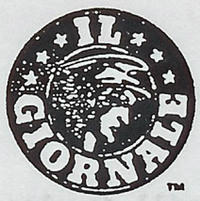Probably the biggest mistake that new companies make when trying to develop their corporate identity is to convince people to buy their product through their logo or branding collateral. There are other tools that are better suited for that task. It's called marketing. There is a fine line of difference between an identity or "Branding" program and a company's marketing efforts. They are subtle and important to understand. Branding's primary role is to serve as a foundation or anchor to lock in the overall message, into the subconscious awareness of the consuming public. Marketing is the vehicle, or tool, that delivers that message, with the intent to solidify the connection to the company's product, in the mind and experience of the consumer. Take Starbucks branding and marketing program as an example of an identity and branding program done right. The name and logo are essentially meaningless in themselves, but they are punchy and memorable enough that they can effectively represent “the Starbucks experience”—which actually comprises more tangible things such as the store design, employee attitude and dress, the coffee, etc.—in an abbreviated form. People associate this vague symbol to their own personal experience with coffee and the "Starbucks' culture".
Take Starbucks branding and marketing program as an example of an identity and branding program done right. The name and logo are essentially meaningless in themselves, but they are punchy and memorable enough that they can effectively represent “the Starbucks experience”—which actually comprises more tangible things such as the store design, employee attitude and dress, the coffee, etc.—in an abbreviated form. People associate this vague symbol to their own personal experience with coffee and the "Starbucks' culture".
Starbucks could have easily come up with a name like “Super Duper Flavorful Coffee Company” with the standard cup or bean logo, but I don't believe all that would have made them the success that the company is today. An eagle, named “majestic soaring bird”, will not capture the beauty of such a creature any more than when you remember your personal experience of seeing one soar overhead. Later, when you see an emblem or photo of an eagle, you "feel" your experience once again and want more. We have essentially branded with image of the eagle.
The point: Be aware that the path to identity or branding success is not always the most obvious route to persue as a designer. Particularly these days, with the emphasis on social networking, branding becomes the tribal emblem to a particular sub-culture of public consumption. People want to socialize and belong. They will search out a following of like-minded, same-consuming culture-buddies in order to have a sense of belonging. Or they will choose to drop out. Even if they choose to drop out, the branding has been sucessful by associating or marking the flag, or symbol, of the "enemy" for them. A focus of your job as a graphic designer is often to lay down the foundation for marketing efforts that will address that social networking need.
A Little Side Note on the Starbucks Story:
 | Starbucks was founded in Seattle, Washington, in 1971 as a local coffee bean roaster and retailer called Starbucks Coffee, Tea and Spices. Howard Schultz joined the company in 1982 and was inspired on a trip to Italy to develop a similar espresso bar and coffeehouse culture in the United States. To advance the concept, he founded the company Il Giornale three years later. In 1987, Schultz purchased Starbucks, merged it with Il Giornale, and renamed the company Starbucks Corporation. The logo on the left is that of the Il Giornale company. As you can see, the Il Giornale logo is somewhat similar to Starbucks logo i.e being circular and having a band. |
| 
| The original logo, as seen on the left, the Starbucks siren was topless and had a fully-visible double fish tail. The original logo has raised some controvery because of the bare chest, but the logo continues to appear on some of the products like the Starbucks Anniversary Blend 1 lb coffee bags. Both the original logos seem to be perfect on wooden crates. |
 | In the second version, her chest was covered by her flowing hair, but her navel was still visible, and the fish tail was cropped slightly. The logo also inherited the stars from the Il Giornale logo. |
 | In the current version, her navel and chest are not visible at all, and only vestiges remain of the fish tails. |












